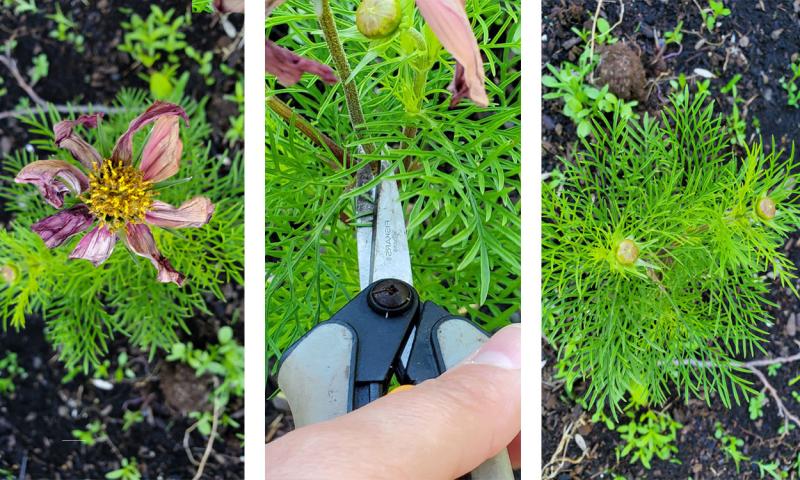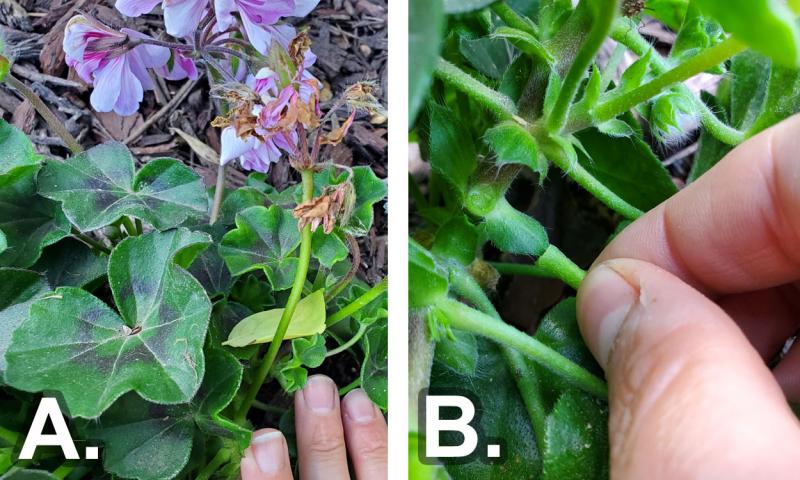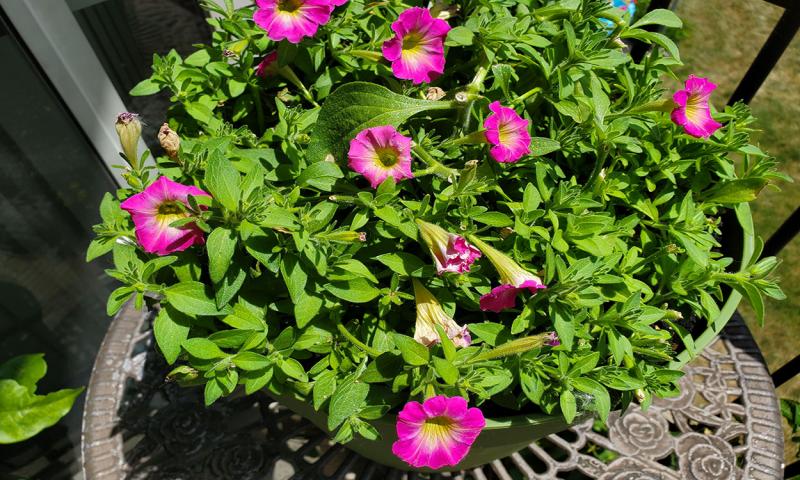
Written by Cindy Schnabel, South Dakota State University (SDSU) Extension Horticulture Assistant and Master Gardener, under the direction and review of Kristine Lang, SDSU Assistant Professor and Consumer Horticulture Extension Specialist.
Deadheading is a simple activity that removes the faded or spent blooms from plants to encourage more flowers. The main phases of the plant life cycle are germination, vegetative growth, flowering, seed set and death. When a spent flower is removed before it sets seed, the plant will try to produce another flower. The ultimate goal of a plant is to complete its life cycle through successful reproduction, in this case, by seed. Deadheading prevents seed production. In essence, deadheading tricks the plant into thinking it needs to create more blooms to make sure its genetics pass to the next generation. While almost all annuals benefit from deadheading, there are also a few perennials that will bloom for a second or even third time if deadheaded.
When and How to Deadhead
When plants in the garden or container have bloomed, and you see fallen petals or faded blooms, start deadheading. Remember to cut off the whole flower above the first set of leaves directly below it. Do not leave the bare stem or remove only some of petals. Remove the entire flower to encourage new growth.
Deadheading is a maintenance practice. Develop the routine of grooming your plants every few days during the growing season and your persistence will be rewarded. Your plants will be healthier and your flowerbeds will be a mass of colorful blooms throughout the summer.
When the weather turns chilly, stop deadheading annuals and perennials. The plant will sense that its reproductive efforts have been successful and will begin to prepare for the final phase of its life cycle. Perennials will begin reallocating nutrients to their roots in preparation for winter survival. Seeds that are left on perennials also provide food for wildlife in the winter. Some annuals drop seeds in the fall that will overwinter and germinate the following spring.

Deadheading Methods
Pinching
If the flower stalks are thin and soft enough, pinch them off between your fingers or with your fingernails. This allows you to deadhead individual blooms on a plant very quickly and is a method that works well with many annual flowers (Figure 1).

Pruners
When deadheading larger perennial plants, like daylilies and coneflowers or annuals with thicker stems, using a hand pruner is recommended so you have nice, clean cuts on the stems where you deadhead (Figure 2). This prevents plant-tissue injury that could become an entry point for disease. Many perennials set flowers on stalks over an extended period of time. If there are still unopened buds lower on the stalk, then just remove the dead flower on top. If all blooms on a flower stock have opened, remove the entire stalk at the base of the plant.

Shearing Back
Some annuals and perennials will benefit by having all spent blooms removed at one time. This method is sometimes referred to as shearing back and is typically accomplished by removing one-third of the entire plant, including spent blooms as well as a small portion of foliage (Figure 3). A good example of a plant that benefits from shearing back is thread-leaf coreopsis, which has small flowers covering the plant and typically sets most blooms during one period of time. When you shear back annuals or perennials, a few flowers may still be in full bloom, and you will lose those. However, the plant will quickly recover and set a completely new flush of blooms. Using the shearing method a couple of times during the growing season can lead to multiple bloom periods for many perennials.
Deadheading Tips and Tricks
- Realize that many perennial plants, such as the peony, only bloom once in a growing season regardless of human intervention. Removing faded blooms will not promote new flowers.
- Hollyhocks and foxglove are both biennials, so if these plants are grown from seed in your garden, you will likely not see blooms until the second season of growth. Avoid deadheading these plants to allow them to set seed. These seeds will drop in the garden and germinate in the next year, allowing you to continue enjoying this short-lived perennial for many years.
- Some hybrid annuals have been bred to not set seed. This mechanism allows them to continue flowering throughout the growing season. It is not necessary to deadhead continuous bloomers, and you might sometimes hear these plants referred to as “self-cleaning.”
- When deadheading roses, make your cut right above a stem with five (not three) leaflets to stimulate reblooming. You might want to leave the last set of spent blooms on the plant at the end of the season to allow rose hips to form, as many are very attractive into the fall and winter.
Special thanks to SDSU Extension Master Gardeners Tim Schreiner and Stacy Dreis for serving as volunteer copyeditors of this article.
Additional Resource
Penn State Extension. 2015. To Deadhead or Not? Your Final Answer is…


